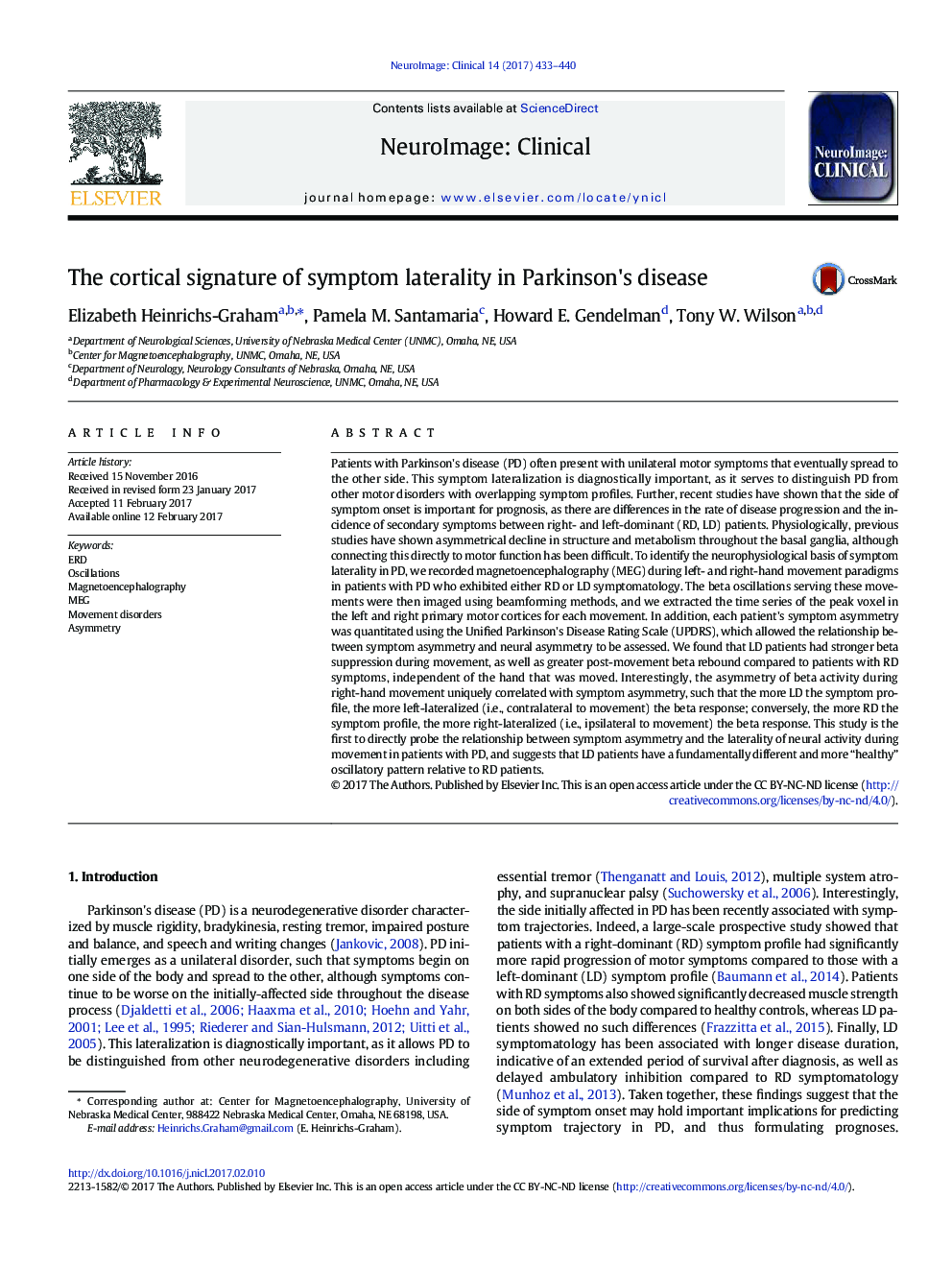| کد مقاله | کد نشریه | سال انتشار | مقاله انگلیسی | نسخه تمام متن |
|---|---|---|---|---|
| 8688703 | 1580953 | 2017 | 8 صفحه PDF | دانلود رایگان |
عنوان انگلیسی مقاله ISI
The cortical signature of symptom laterality in Parkinson's disease
ترجمه فارسی عنوان
امضای کورتیکال در بیماری پارکینسون علائم جانبی
دانلود مقاله + سفارش ترجمه
دانلود مقاله ISI انگلیسی
رایگان برای ایرانیان
کلمات کلیدی
موضوعات مرتبط
علوم زیستی و بیوفناوری
علم عصب شناسی
روانپزشکی بیولوژیکی
چکیده انگلیسی
Patients with Parkinson's disease (PD) often present with unilateral motor symptoms that eventually spread to the other side. This symptom lateralization is diagnostically important, as it serves to distinguish PD from other motor disorders with overlapping symptom profiles. Further, recent studies have shown that the side of symptom onset is important for prognosis, as there are differences in the rate of disease progression and the incidence of secondary symptoms between right- and left-dominant (RD, LD) patients. Physiologically, previous studies have shown asymmetrical decline in structure and metabolism throughout the basal ganglia, although connecting this directly to motor function has been difficult. To identify the neurophysiological basis of symptom laterality in PD, we recorded magnetoencephalography (MEG) during left- and right-hand movement paradigms in patients with PD who exhibited either RD or LD symptomatology. The beta oscillations serving these movements were then imaged using beamforming methods, and we extracted the time series of the peak voxel in the left and right primary motor cortices for each movement. In addition, each patient's symptom asymmetry was quantitated using the Unified Parkinson's Disease Rating Scale (UPDRS), which allowed the relationship between symptom asymmetry and neural asymmetry to be assessed. We found that LD patients had stronger beta suppression during movement, as well as greater post-movement beta rebound compared to patients with RD symptoms, independent of the hand that was moved. Interestingly, the asymmetry of beta activity during right-hand movement uniquely correlated with symptom asymmetry, such that the more LD the symptom profile, the more left-lateralized (i.e., contralateral to movement) the beta response; conversely, the more RD the symptom profile, the more right-lateralized (i.e., ipsilateral to movement) the beta response. This study is the first to directly probe the relationship between symptom asymmetry and the laterality of neural activity during movement in patients with PD, and suggests that LD patients have a fundamentally different and more “healthy” oscillatory pattern relative to RD patients.
ناشر
Database: Elsevier - ScienceDirect (ساینس دایرکت)
Journal: NeuroImage: Clinical - Volume 14, 2017, Pages 433-440
Journal: NeuroImage: Clinical - Volume 14, 2017, Pages 433-440
نویسندگان
Elizabeth Heinrichs-Graham, Pamela M. Santamaria, Howard E. Gendelman, Tony W. Wilson,
